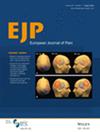Pain catastrophizing and trunk co-contraction during lifting in people with and without chronic low back pain: A cross sectional study
Abstract
Background
Trunk co-contraction during lifting may reflect a guarded motor response to a threatening task. This work estimated the impact of pain catastrophizing on trunk co-contraction during lifting, in people with and without low back pain.
Methods
Adults with high pain catastrophizing (back pain: n = 29, healthy: n = 7) and low pain catastrophizing (back pain: n = 20, healthy: n = 11), performed 10 repetitions of a lifting task. Electromyography data of rectus abdominis, erector spinae and external oblique muscles were collected, bilaterally. Co-contraction indices were determined for rectus abdominis/erector spinae and external oblique/erector spinae pairings, bilaterally. Pain catastrophizing was measured using the pain catastrophizing scale and task-specific fear using the Photograph series of daily activities scale. Three-way mixed ANOVAs tested the effects of group (back pain vs. healthy), pain catastrophizing (high vs. low), lifting phase (lifting vs. replacing) and their interactions.
Results
There were no main effects of pain catastrophizing, lifting phase, nor any interactions (p > 0.05). Group effects revealed greater co-contraction for bilateral erector spinae/rectus abdominis pairings (but not erector spinae-external oblique pairings) in people with back pain, compared to healthy participants, independent of pain catastrophizing and lifting phase (p < 0.05). Spearman correlations associated greater task-specific fear and greater erector spinae-left external oblique co-contraction, only in people with back pain (p < 0.05).
Conclusions
Greater co-contraction in the back pain group occurred independent of pain catastrophizing, as measured with a general questionnaire. A task-specific measure of threat may be more sensitive to detecting relationships between threat and co-contraction.
Significance Statement
This work contributes evidence that people with back pain commonly exhibit trunk co-contraction when lifting. The lack of a relationship between pain catastrophizing and trunk co-contraction, however, challenges evidence linking psychological factors and guarded motor behaviour in this group. Together, this suggests that other factors may be stronger determinants of co-contraction in people with LBP or that a general construct like pain catastrophizing may not accurately represent this relationship.


 求助内容:
求助内容: 应助结果提醒方式:
应助结果提醒方式:


